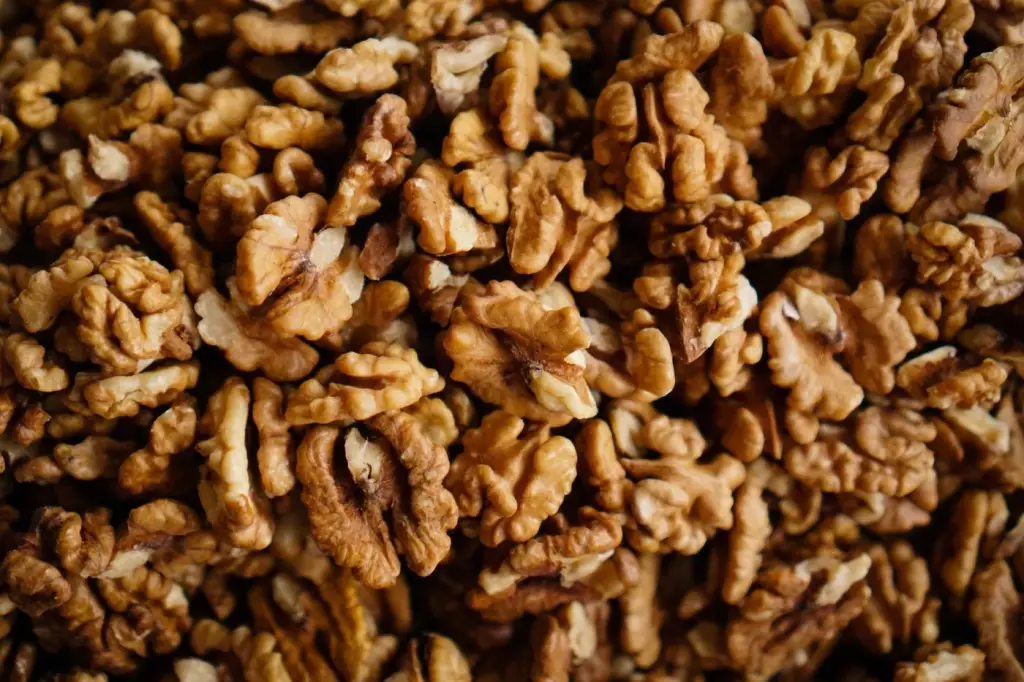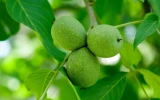How Often Do Walnut Trees Produce Nuts?
Walnut trees are known to be biennial bearing, meaning they may produce a heavy crop one year and a light crop the following year. The frequency of nut production is also affected by factors such as weather, disease, and the age of the tree. If you're eager to learn about how often walnut trees produce nuts, here's the perfect article for you.
Walnut trees typically produce nuts once a year (around 50–80 pounds per year), usually during the autumn months. Some walnut trees may produce a good crop every 2–3 years, while others may have a bumper crop one year and a poor crop the next.
One of the factors to consider on why your walnut trees are not producing nuts is extreme temperatures. When trees experience stress due to temperature fluctuations, it can significantly impact their ability to bear fruit. In this article, we'll dive into the details of how temperature and other factors can impact nut production and provide you with valuable tips to ensure your walnut tree produces a bountiful harvest.
Understanding the frequency of nut production in walnut trees can help you set realistic expectations and select management practices that will result in a fruitful harvest each and every year when you start your own walnut farm from scratch.
Summary
- English walnut trees can produce up to 80 pounds of nuts per year, starting at around 8 years of age, but peak production is reached only until 30 years of age.
- Black walnut trees produce smaller nuts but can still yield up to 50–100 pounds per year, starting at around 10 years of age, with peak production at around 30–40 years old.
- Native and hybrid walnut species such as Butternut, Heartnut, and hybrid walnut can produce nuts, with yields ranging from 30 to 60 pounds per year.
- Tree age and size can also affect nut production, with larger, more established trees typically producing more nuts than smaller trees.

On this page:
Frequency of Walnut Tree Nut Production
Walnut trees typically produce nuts once a year, usually during the autumn months. However, the amount of nuts can vary each year.
Occasionally, they will not produce any fruits during the growing season because of stressors such as drought, pests, or lack of nutrients.
Walnut trees are biennial-bearing, which means they produce a heavy crop of nuts one year and a lighter crop the next year. This alternate bearing pattern is a natural process that occurs in many fruit and nut trees.
The amount of nuts a walnut tree produces each year depends on various factors, including the age of the tree, the climate, and the amount of sunlight it receives. Younger trees usually produce fewer nuts than mature trees.

A mature walnut tree can yield up to 150 pounds of nuts in a good year. However, the average yield is usually around 50-80 pounds per tree.
Walnuts are usually harvested in the fall when the nuts have ripened and fallen to the ground. You can also shake the tree to make the nuts fall. Once the nuts have fallen, you need to remove the husks and dry them in the sun for a few days.
After the nuts have dried, you can store them in a cool, dry place. They can last for several months if stored properly.
Common Walnut Varieties and Their Nut Production
The table below shows some of the most common walnut varieties and their nut yields:
| Walnut Type | Nut Production | Yield per Year | Frequency of Nut Production |
|---|---|---|---|
| English walnut | Starts producing nuts at 8th year, peaks at around 30 years | Up to 80 pounds | Once a year |
| Black walnut | Starts producing nuts at 10th year, peaks at around 40 years | 50 - 100 pounds | Once a year |
Nut production of English walnut
English walnuts, also known as Persian walnuts, are the most commonly cultivated type of walnut tree. They are native to the regions of Central Asia and the Middle East but are now grown in many parts of the world, including the United States, where they are a popular crop in California.
English walnut trees can produce up to 80 pounds of nuts per year, making them a highly productive crop. The trees typically begin producing nuts at around 8 years of age, with some producing as early as 5 years of age, but may not reach peak production until they are around 30 years old.
The nuts of this variety are large, oval-shaped, and have a hard, wrinkled shell that is difficult to crack. The meat inside the shell is light-colored and has a mild, slightly sweet flavor. English walnuts are often used in baking and cooking and are also a popular snack food.
In addition to their flavor and texture, English walnuts are also a good source of nutrition. They are high in protein, fiber, and healthy fats, and are also a good source of vitamins and minerals, including vitamin E, magnesium, and phosphorus.
Nut production of Black walnut
Black walnuts are a type of walnut tree that is native to North America. They are known for their dark, richly flavored nuts, which have a hard, thick shell that can be difficult to crack.
Compared to English walnuts, Black walnuts produce smaller nuts, but they can still yield up to 50 - 100 pounds of nuts per year.
They typically begin producing nuts at around 10 years of age, mature at 25 years of age, but may not reach peak production until they are around 40 years old.

The nuts are harvested in the fall after they have fallen to the ground. Because of their hard shells, Black walnuts are often cracked open with a hammer or other tool, rather than a nutcracker.
Black walnuts are highly valued for their flavor, which is described as earthy, nutty, and slightly bitter. They are often used in baking and cooking and are a popular ingredient in desserts like cakes, cookies, and pies.
In addition to their flavor, Black walnuts are also a good source of nutrition. They are high in protein, fiber, and healthy fats, and are also a good source of vitamins and minerals, including vitamin E, magnesium, and phosphorus.
Nut Production of Native and Hybrid Walnut Species
There are also various native and hybrid species of walnut trees that can produce nuts including the following:
| Walnut Type | Nut Production | Yield per Year | Frequency of Nut Production |
|---|---|---|---|
| Butternut | Begins producing nuts at 10 years of age, peaks at around 30 years | Up to 30 pounds | Once a year |
| Heartnut | Begins producing nuts at 8 years of age, peaks at around 30 years | Up to 50 pounds | Once a year |
| Hybrid walnut | Begins producing nuts at around 8 years of age, peak age is 30-40 years | Up to 60 pounds | Once a year |
Nut production of Butternut
The Butternut tree, also known as the White Walnut tree, can produce up to 30 pounds of nuts per year, although the nuts are smaller than those produced by the English Walnut tree.
The tree typically begins producing nuts when it is around 10 years old and reaches peak production at around 30 years. After that, the production may decline gradually.
The nuts produced by the Butternut tree have a hard, thick shell that is covered in a sticky, green husk. The nuts themselves are small and have a sweet, buttery flavor that is prized by many people.
The Butternut tree is native to North America and is typically found in the eastern and central parts of the continent. It prefers moist, well-drained soils and can grow in a variety of habitats, including forests, riverbanks, and meadows.
Unfortunately, this species of walnut is considered endangered due to a fungal disease called Butternut Canker, which has killed off many trees in recent years. As a result, efforts are underway to protect and preserve the remaining Butternut trees.
Nut production of Heartnut
The Heartnut tree produces heart-shaped nuts and can yield up to 50 pounds of nuts per year. It typically begins producing nuts when it is around 8 years old and reaches peak production at around 30 years.
After that, the production may decline gradually. Heartnut is prized for its flavorful and nutritious nuts, which are high in protein, healthy fats, and antioxidants.
It is a relatively fast-growing tree and can reach heights of up to 50 feet when mature. The Heartnut tree is native to Japan but has been introduced to other parts of the world, including North America and Europe, where it is grown commercially and for personal use.
Nut production of Hybrid walnut
This tree is a cross between the English walnut and the black walnut. It can produce up to 60 pounds of nuts per year and usually starts producing nuts at around 8 years of age.
Hybrid Walnut trees are typically medium to large-sized, growing up to 50-75 feet tall and 35-50 feet wide. They produce large and round nuts, typically measuring 1.5-2 inches in diameter.
The shell of the nut is hard and requires a nutcracker or other specialized tool to open. The nuts have a rich, nutty flavor and are commonly used in baking and cooking.

Hybrid walnut nuts are high in protein, fiber, and healthy fats, making them a nutritious snack. They are usually harvested in the fall after they have fallen from the tree. They can also be shaken from the tree or harvested by hand.
Walnut Cultivars and Their Nut Production
Cultivars are varieties of plants that have been selectively bred or developed for specific characteristics such as size, yield, disease resistance, or flavor.
These cultivars have been specifically developed to be smaller in size and to produce a good amount of nuts at a younger age, making them ideal for gardeners who have limited space.
The table below shows these cultivars of common walnut and their nut production:
| Walnut Cultivar | Nut Production | Yield per Year | Frequency of Nut Production |
|---|---|---|---|
| Carpathian walnut | Produces nuts at around 4 years of age | Up to 50 pounds | Once a year |
| Sparks 127 | Produces nuts at around 3 years of age | Up to 20 pounds | Once a year |
Nut production for Carpathian walnut
Carpathian walnuts are a type of walnut tree that is native to the Carpathian Mountains of Eastern Europe. They are semi-dwarf trees that produce large nuts and can yield up to 50 pounds of nuts per year. They usually start producing nuts at around 4 years of age.
They are known for their large, flavorful nuts and semi-dwarf growth habit, which makes them a popular choice for home orchards and small-scale commercial nut production.
Carpathian walnut trees typically reach a mature height of 20-30 feet, with a spread of 15-25 feet. They have a rounded, spreading canopy and attractive, dark green foliage.
The nuts themselves are large and round, with a thick, hard shell that is easy to crack. They are prized for their rich, buttery flavor and high nutritional content.
In terms of growing conditions, Carpathian walnuts prefer well-drained soil and full sun. They are relatively cold-hardy and can tolerate temperatures down to -20°F.
Once established, they are also relatively drought-tolerant, although they will produce more nuts with regular watering.
Nut production for Sparks 127
Sparks 127 is a variety of walnut trees that was developed by the University of California, Davis in the 1960s. It is a hybrid between the Carpathian and the English walnut and is known for its large, high-quality nuts and vigorous growth habit.
This tree typically reaches a mature height of 30-40 feet, with a spread of 25-30 feet. It has a rounded, spreading canopy and attractive, dark green foliage. The nuts themselves are large and oval-shaped, with a thin, easy-to-crack shell and a rich, buttery flavor.
In terms of growing conditions, Sparks 127 walnuts prefer well-drained soil and full sun. They are relatively cold-hardy and can tolerate temperatures down to -10°F. Once established, they are also relatively drought-tolerant, although they will produce more nuts with regular watering.
Parameters That Impact Walnut Tree Nut Production
If you are wondering why your walnut tree is not producing nuts, there could be several factors at play such as the following:
Climate and weather conditions
Walnut trees thrive in areas with moderate to cool climates and require a minimum of 140 frost-free days. Extreme temperatures, such as heatwaves or frost, can cause stress to the tree and affect its ability to produce nuts.
In addition, drought or excessive rainfall can also impact nut production. A lack of water can cause the tree to drop its nuts prematurely, while too much water can lead to root rot and other diseases.
Soil quality and nutrient availability
Walnut trees require well-draining soil that is rich in organic matter. If your soil is compacted or lacks nutrients, it can affect the tree's ability to produce nuts.
You may need to regularly test your soil and amend it with compost or other organic matter as needed to ensure that it has the proper pH and nutrient balance.

In your journey of walnut farming, understanding how often walnut trees produce nuts is as vital as knowing the lifespan of different varieties, like English and Black walnuts, to effectively plan for long-term productivity and orchard sustainability.
Tree age and size
Walnut trees typically begin to produce nuts when they are 7 to 8 years old. However, the amount of nuts produced can vary depending on the size of the tree.
Smaller trees may produce fewer nuts than larger, more established trees. In addition, older trees may produce fewer nuts as they age.
Pest and disease management
Common pests affecting walnut trees include aphids, mites, and codling moths. Diseases such as walnut blight and root rot can also impact nut production.
You need to regularly inspect your tree for signs of pests or diseases and take appropriate measures to manage them. To learn more about the common diseases and pests that diminish walnut production and affect the overall health of walnut trees, you'll find this article helpful.



